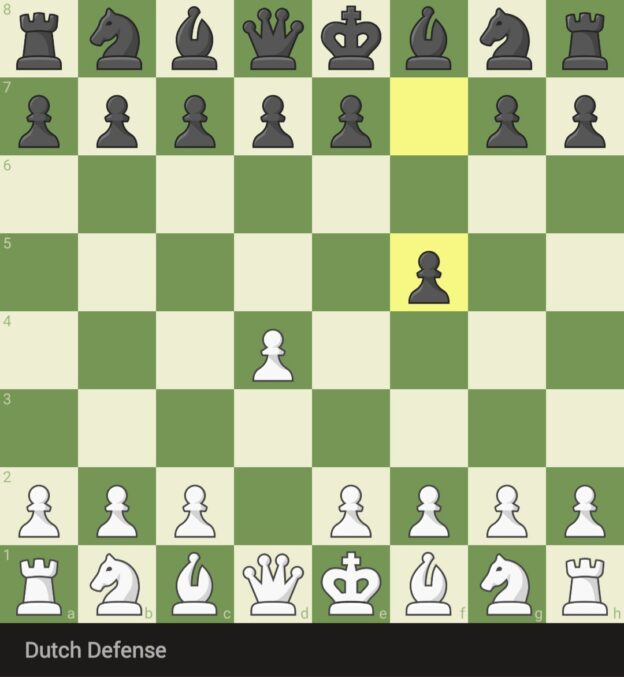In the vast world of chess openings, where strategy and theory often dictate the course of play, the Dutch Defence stands out as a bold and unorthodox choice. Characterized by early pawn moves to f5, this opening challenges classical principles and offers players the opportunity to seize the initiative and launch dynamic counterattacks. This essay delves into the history, principles, and enduring appeal of the Dutch Defence.
Historical Origins:
The Dutch Defence, also known as the Dutch Stonewall, traces its origins back to the 19th century. While it had made appearances in earlier games, it gained prominence when it was played by the Dutch player Johannes Zukertort in a tournament in London in 1883. Since then, it has been a favorite of many players seeking to avoid well-trodden paths and create an unbalanced, aggressive game.
Key Moves and Variations:
The Dutch Defence typically begins with the moves 1.d4 f5, where Black immediately stakes a claim to the e4 square and prepares for a solid pawn structure with d6 and e6. This setup can lead to various variations, including the Leningrad Dutch, the Classical Dutch, and the Stonewall Dutch. Each offers distinct strategic ideas and challenges for both sides.
Principles and Characteristics:
- Pawn Breaks and Counterattacks: The Dutch Defence is characterized by an emphasis on counterattacking. By challenging White’s central pawn structure, Black aims to disrupt White’s plans and create opportunities for aggressive play on the kingside.
- Pawn Structure: The pawn structure in the Dutch Defence is unique. Black typically places pawns on f5, d6, and e6, forming a solid wall of pawns. While this structure offers stability and central control, it can also lead to pawn weaknesses if not handled carefully.
- King’s Safety: The Dutch Defence often leaves the king on e8, which means that Black must carefully consider king safety. Castling kingside is common, but it requires vigilant defense, as White often launches attacks on the same side of the board.
Modern Relevance:
In contemporary chess, the Dutch Defence is a less common choice at the highest levels of play. Grandmasters often prefer more traditional and well-established openings. However, it remains a popular choice among club players and enthusiasts who appreciate its counterattacking nature and the element of surprise it brings to the board.
Famous Practitioners:
Several famous chess players have employed the Dutch Defence in their games, including former World Chess Champion Mikhail Tal, who was renowned for his aggressive and imaginative style. Tal’s use of the Dutch Defence in his games showcases its potential for creating dynamic and complex positions.
Conclusion:
The Dutch Defence is a testament to the diversity and richness of chess openings. While it may not be the most conventional choice, its bold and counterattacking nature appeals to players who relish the opportunity to seize the initiative and engage in complex battles. The Dutch Defence reminds us that in chess, as in life, sometimes it’s the unconventional and unexpected choices that lead to the most exciting and memorable experiences on the board.
